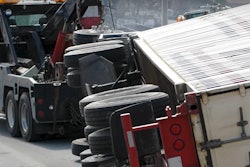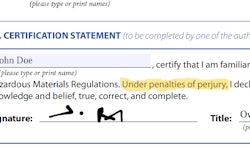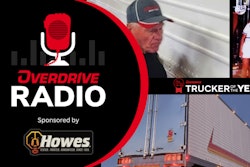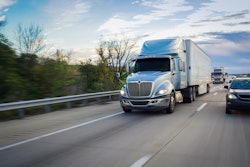Trucking news and briefs for Wednesday, June 26, 2024:
NHTSA stands by rule increasing rear impact guard strength
The National Highway Traffic Safety Administration announced in a Federal Register notice to be published Thursday, June 27, that it has denied a petition for reconsideration of a 2022 rule beefing up standards for rear impact guards on trailers.
That rule, published July 15, 2022, required rear impact guards to provide sufficient strength and energy absorption to protect occupants of compact and subcompact passenger cars impacting the rear of trailers at 35 mph. The rule aimed to better protect passenger vehicle occupants when they hit the center of the rear of a trailer and when 50% of the width of the vehicle overlaps the rear of the trailer, NHTSA said.
Following publication of the rule, NHTSA received a petition for reconsideration from a coalition of advocacy groups, including Advocates for Highway and Auto Safety (Advocates), the Truck Safety Coalition (TSC), Citizens for Reliable and Safe Highways (CRASH), and Parents Against Tired Truckers (PATT), which argued the rulemaking didn’t go far enough. NHTSA said the coalition “disagreed with the data and analysis that the agency used for the final rule and asserted that NHTSA should require reinforced rear guards designed for the 30% overlap crash condition.” The petitioners further claimed the new standards were “inadequate and dangerous.”

NHTSA, in its denial of the petition, stood by the data it used in creating the rule, noting that the Trucks in Fatal Accidents (TIFA) database it used is more accurate than NHTSA’s own Fatality Analysis Reporting System (FARS) for medium- and heavy-duty trucks involved in fatal crashes.
Additionally, regarding the 30% overlap crash condition, NHTSA said it must consider when establishing new safety standards “whether a proposed standard is reasonable, practicable, and appropriate for the motor vehicle type for which it is prescribed.” The agency decided that a standard that required all trailers and semitrailers to meet a 30% overlap standard “would not be reasonable or practicable.”
TSC Board Member Jennifer Tierney, long an advocate for underride protection improvements on trailers, called NHTSA’s decision to deny the petition “abhorrent and indefensible. The one agency with the authority to protect the motoring public from these violent and gruesome crashes refuses to be proactive in the name of safety. At NHTSA’s current pace, I may well be dead and buried before adequate underride protections are ever required.”
Following the agency's 2022 actions on rear-impact guards, NHTSA has also been working on a rulemaking to require side underride guards on trailers. The agency last year published an ANRPM seeking feedback on the benefits, costs and other impacts of side underride guards. A February DOT Significant Rulemakings report does not list a date for the publication of an NPRM. Instead, the next date listed is October 2024 for “analyzing comments.”
[Related: NHTSA launching committee to study underride crashes as new regs near]
Bill to establish freight theft/fraud task force introduced in House
To supplement language included in the Fiscal Year 2025 Homeland Security Appropriations Act that would allocate funding for a task force to address supply chain fraud and cargo theft, Rep. David Valadao (R-California) has introduced a similar, stadalone bill in the U.S. House.
The Safeguarding our Supply Chains Act aims to improve coordination between the Department of Homeland Security and the FBI to stop theft within the nation’s supply chains, Valadao said.
“The alarming increase in cargo theft is having a devastating impact across industries, and we need to do more to ensure these goods are making it to their destination,” he added. “The Safeguarding our Supply Chains Act will improve coordination to identify solutions and prevent theft. I’m proud to introduce this bipartisan bill and look forward to working with my colleagues to get this across the finish line.”
[Related: Chicago-area freight thief steals $9.5M in goods]
The bill, if passed and made law, would establish a Supply Chain Crime Coordination Center within the Department of Homeland Security’s Homeland Security Investigations division (HSI) and a Supply Chain and Theft Task Force led by HSI and the FBI.
The coordination center would collect and analyze data related to supply chain fraud and theft and analyze regions and modes of transportation in the United States that are experiencing high volumes of organized crime.
The task force would address supply chain fraud and theft throughout the rail, motor carrier, and intermodal systems to detect, disrupt, and deter organized theft groups that are targeting all stages of the supply chain.
The legislation is supported by the American Trucking Associations, UPS, and numerous other supply chain groups and companies.
[Related: Congress eyes creation of anti-fraud/cargo theft task force]
New EV charging infrastructure funding application opening soon
A new funding opportunity for California fleets interested in deploying electric vehicle charging infrastructure for Class 2b-8 vehicles or off-road equipment will open in July.
Funded by the California Energy Commission and administered by Calstart, the Energy Infrastructure Incentives for Zero-Emission Commercial Vehicles (EnergIIZE) Project will open its EV Jump Start funding lane on July 16 at 9 a.m. Pacific, and will run through Sept. 10 at 5 p.m. Pacific.
The EV Jump Start funding lane is one of four standard funding lanes under EnergIIZE that focuses on equity-qualified projects on private, public, or shared use sites. It covers up to 75% of eligible infrastructure equipment and software costs for projects up to $750,000. Eligible costs include but are not limited to: Level 2 chargers, direct current fast chargers (DCFC), transformers, switchgear, charger accessories, utility service upgrades, and fleet and demand management software.
The application process is competitive, and applications are scored on criteria demonstrating operations and maintenance planning, cost effectiveness, and community benefit.
[Related: Electric-truck purchase incentives present big challenges for owner-ops, small fleets]
Those eligible for the funding include: Tribe or Tribal serving entities; small businesses as recognized by the California State Legislative Code; minority-owned, woman-owned, veteran-owned, or LGBT-owned businesses; infrastructure installed in a designated disadvantaged or low-income community (DAC or LIC); public transit systems with at least 50% of routes in a DAC or LIC; public school districts serving economically disadvantaged students; and nonprofit organizations.
Calstart noted that EV Jump Start eligibility requirements have changed since the last round of funding. Previously, EnergIIZE only accepted one application per tax identification number (TIN). However, the new policy allows single entities, as identified by TIN, to apply for multiple unique project sites, but they cannot be awarded more than 25% of the total funding available for this lane.
Applications will be accepted through an online Incentive Processing Center (IPC) the day the funding lane opens. Potential applicants are encouraged to view the resources on the EnergIIZE website for more information and schedule time with the project team to ask questions about EV Jump Start.













